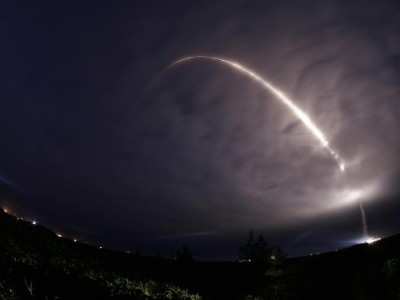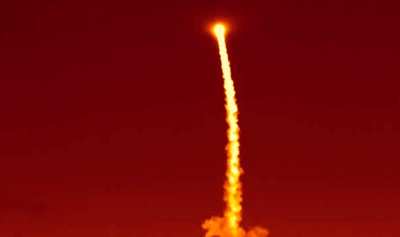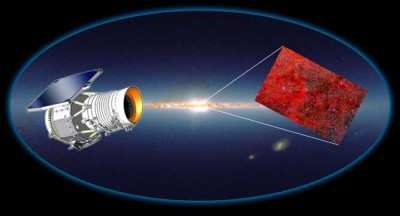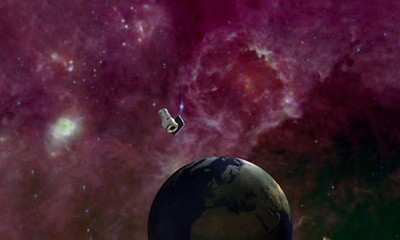Detailed Celestial IR Survey About To Commence
NASA tells ANN that all systems are behaving as expected on
their Wide-field Infrared Survey Explorer (WISE), which rocketed
into the sky just before dawn on Dec. 14 from Vandenberg Air Force
Base in California. The mission will undergo a one-month checkout
before beginning the most detailed survey yet of the entire sky in
infrared light. Hundreds of millions of objects will populate its
vast catalog, including dark asteroids, the closest "failed" stars
and tremendously energetic galaxies.

Shortly after the space telescope reached its polar orbit around
Earth on Dec. 14, it acquired the sun's position and lined up with
its solar panels facing the sun. Engineers and scientists continue
to check out the spacecraft's pointing-control system in
preparation for jettisoning the instrument's cover, an event now
scheduled for Dec. 29. With the cover off, WISE will get its first
look at the sky.

The cover serves as the top to a Thermos-like bottle, called a
cryostat, which chills the heat-sensitive infrared instrument. The
instrument consists of a 40-centimeter (16-inch) telescope and four
detectors, each with one million pixels. Just as a Thermos bottle
keeps your coffee warm or your iced tea cold with a thin vacuum
layer, a vacuum inside WISE's cryostat kept the instrument cold
while it was on the ground.

The cover also prevented light from reaching the detectors, and
protected the chilly interior of the instrument from heat that
could have come about from unintentional pointing at Earth or the
sun during launch. After WISE was pushed away from its rocket, it
wobbled around slightly before stabilizing (a process that took
surprisingly little time -- only 3 minutes). Without the cover, the
heat from Earth or the sun would have shortened the time the
cryostat kept the instrument cold, and possibly damaged the
detectors.

Now that WISE is steadily perched in the vacuum of space, it
will no longer need the instrument cover; in fact, space will
provide an even better vacuum. Engineers are preparing to pop the
cover by making sure the pointing-control system is functioning
properly. Once everything has been checked out, they will send a
signal to fire pyrotechnic devices, releasing nuts that are
clamping the cover shut. Three springs will then push the lid away
and into an orbit closer to Earth than that of the spacecraft.
The WISE team has also verified that the instrument is as cold
as planned. The cryostat's outer shell is slightly below the
planned 190 Kelvin (minus 83 degrees Celsius, or minus 117 degrees
Fahrenheit), and the coldest of the detectors is less than 8 Kelvin
(minus 265 degrees Celsius, or minus 447 degrees Fahrenheit).

All spacecraft systems are functioning normally, and both the
low- and high-rate data links are working properly. The
instrument's detectors are turned on, and though they are currently
staring into the backside of the instrument cover, they will soon
see the light of stars. WISE's first images will be released within
one month after its one-month checkout.
JPL manages the Wide-field Infrared Survey Explorer for NASA's
Science Mission Directorate, Washington. The principal
investigator, Edward Wright, is at UCLA. The mission was
competitively selected under NASA's Explorers Program managed by
the Goddard Space Flight Center, Greenbelt, Md. The science
instrument was built by the Space Dynamics Laboratory, Logan, Utah,
and the spacecraft was built by Ball Aerospace & Technologies
Corp., Boulder, Colo. Science operations and data processing take
place at the Infrared Processing and Analysis Center at the
California Institute of Technology in Pasadena. Caltech manages JPL
for NASA.
 Airborne 05.10.24: Icon Auction, Drunk MedEvac Pilot, Bell ALFA
Airborne 05.10.24: Icon Auction, Drunk MedEvac Pilot, Bell ALFA ANN's Daily Aero-Term (05.13.24): ILS PRM Approach
ANN's Daily Aero-Term (05.13.24): ILS PRM Approach ANN's Daily Aero-Linx (05.13.24)
ANN's Daily Aero-Linx (05.13.24) Airborne-NextGen 05.07.24: AI-Piloted F-16, AgEagle, 1st 2 WorldView Sats
Airborne-NextGen 05.07.24: AI-Piloted F-16, AgEagle, 1st 2 WorldView Sats Airborne 05.08.24: Denali Update, Dad-Daughter Gyro, Lake SAIB
Airborne 05.08.24: Denali Update, Dad-Daughter Gyro, Lake SAIB







